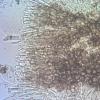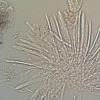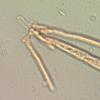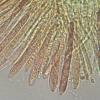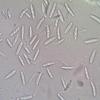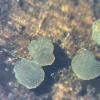
17-07-2019 18:10
Jac GelderblomHello On culms of Typha I found a small mollisia

17-07-2019 15:12
Thomas LæssøeHas anyone Remler or the part that contains Belono

12-07-2019 14:29
Alessandro FellinHabitat: in torbiera a sfagni su steli guasti e im
Mollisia with red ascustop IKI
Jac Gelderblom,
17-07-2019 18:10
Hello
On culms of Typha I found a small mollisia (ca 0,7 mm diam.)
Asci: 50 - 60 x 5 - 5,5 micron, top red in IKI (fotot 4), with croziers (Foto 3)
Spores: 9-12x2,2-2,8 micron, with drops in water (foto 5)
Parafysen with refractive VB's (Foto 2)
KOH reaction very week, dubious.
Foto 1 is the excipulum with marginal cells.
My first thought in the field was M. palustris, but the red ascustops........
Can anyone help me finding a name?
Friendly greetings
Jac Gelderblom
Hans-Otto Baral,
17-07-2019 21:15

Re : Mollisia with red ascustop IKI
I remember only one with rather small, 0-septate spores: M. lothariana. I think it is. Grows on different Poaceae and Typha.
Zotto
Zotto
Jac Gelderblom,
18-07-2019 12:18
Re : Mollisia with red ascustop IKI
Vielen Dank Hans-Otto!!
Grüsse
Jac Gelderblom



